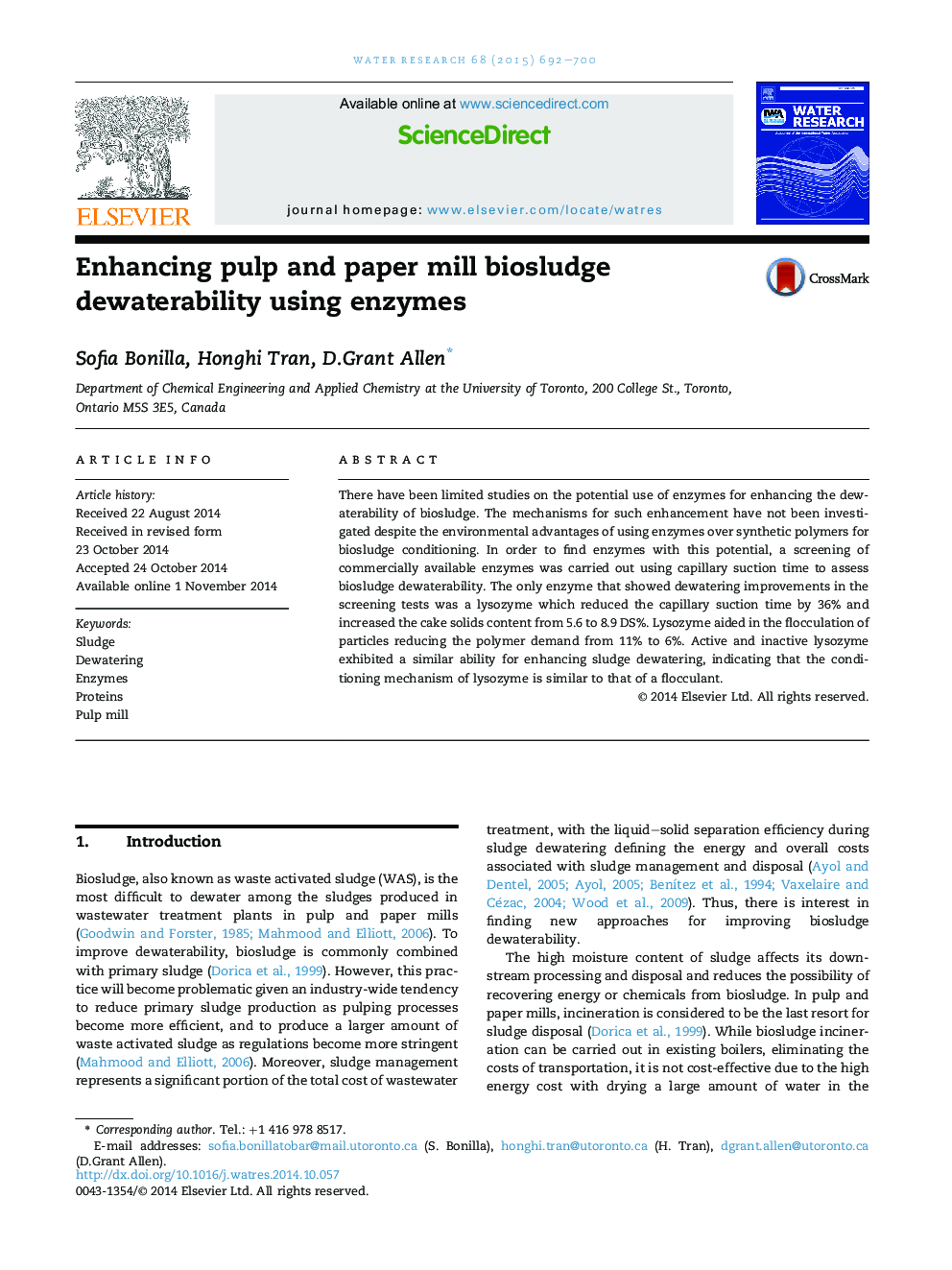| Article ID | Journal | Published Year | Pages | File Type |
|---|---|---|---|---|
| 6366388 | Water Research | 2015 | 9 Pages |
â¢Lysozyme significantly enhances the dewaterability of biosludge.â¢Lysozyme reduced the capillary suction time by 36%.â¢Lysozyme increased cake solids after mechanical dewatering from 6 to 9%.â¢The mechanism of enhanced dewaterability is not enzymatic.â¢Aggregation of particles after conditioning suggest a flocculating mechanism.
There have been limited studies on the potential use of enzymes for enhancing the dewaterability of biosludge. The mechanisms for such enhancement have not been investigated despite the environmental advantages of using enzymes over synthetic polymers for biosludge conditioning. In order to find enzymes with this potential, a screening of commercially available enzymes was carried out using capillary suction time to assess biosludge dewaterability. The only enzyme that showed dewatering improvements in the screening tests was a lysozyme which reduced the capillary suction time by 36% and increased the cake solids content from 5.6 to 8.9 DS%. Lysozyme aided in the flocculation of particles reducing the polymer demand from 11% to 6%. Active and inactive lysozyme exhibited a similar ability for enhancing sludge dewatering, indicating that the conditioning mechanism of lysozyme is similar to that of a flocculant.
Graphical abstractDownload high-res image (182KB)Download full-size image
